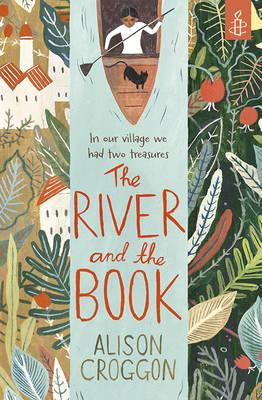The River and the Book by Alison Croggon

Walker Books, 2015. ISBN 9781925081725
(Ages 12+) Recommended. The River and The Book has been
acknowledged by Amnesty International for addressing human rights
abuse in cultural, and economic terms. Poetically written this book
will be an asset to for its literary and thematic content. Simbala
is the Keeper of the Book and as the women in her family before her
is an important member of the village in which she lives. People
come to consult the Book for many reasons but Sim is the only one
who can touch it or read its messages. The book contains the history
and soul of the village, and like the oracle has the answers to all
the villager's questions.
The River is the life blood of the village bringing life and riches
as well as providing transport. Droughts cause the river to fail but
when developers upstream reduce the flow and begin polluting the
River, neighbouring villages are turned against each other. When
consulted the Book offers a one word answer to the problem,
'Change.' However change arrives in the unexpected form of Jane
Watson, a foreigner intent on writing about the river people, who
befriends Sim but betrays her trust, steals the Book and disappears.
Desperate to return the book to its rightful place Sim travels down
the River in search of the thief, vowing to only to return when she
has recovered the treasure. Along the way she meets a variety of
companions, and eventually settles in the city, still searching for
Jane. She finally discovers Jane is working at the University and
has published a book highlighting the plight of the River and the
people who rely on it for their living.
Why someone would assume they had the right to take a community's
most precious property is foremost in Sim's mind and could be a
stimulus for deep discussion between students in an exploration of
human rights and ethics. The divide between cultures and the assumed
rights of westerners is foremost but the book is also an
introduction to discussions surrounding development, pollution and
change.
Sue Keane